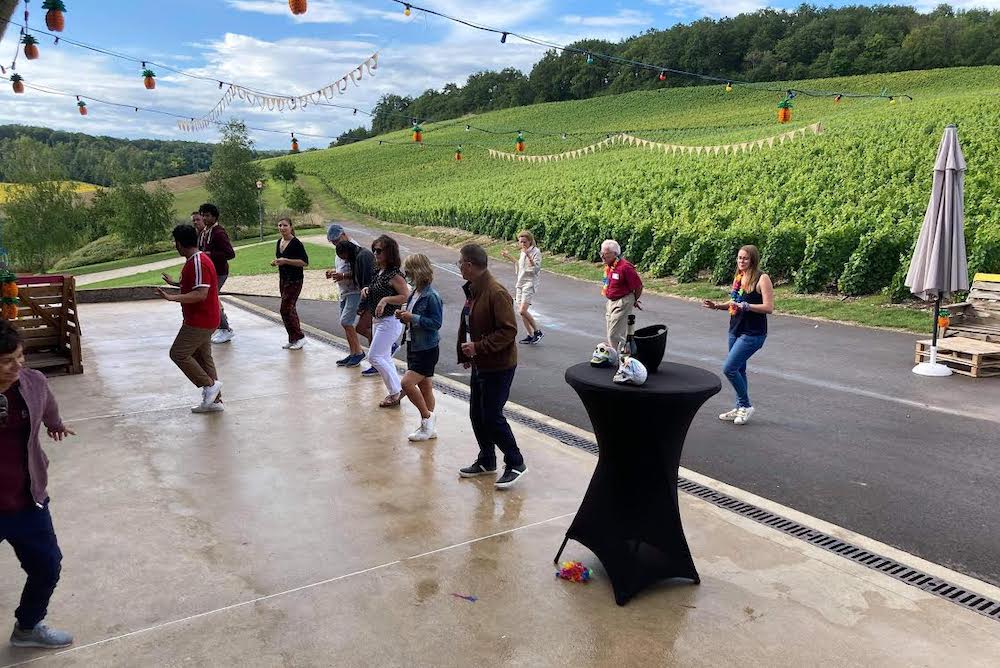
Gone are the days of being impressed by big Champagne houses, with their mega branding and oh-so-expensive bottles. Not to say it isn’t good: It IS good. But, there are some (relatively) new competitors in town offering higher quality at lower prices: and it’s called “Grower Champagne”, or lovingly dubbed “Farmer Fizz” by wine geeks.
This is where the vintner is in complete control of the product: they grow their own grapes, make their own Champagne, bottle, brand and sell it. The French simply use the term récoltant manipulant (pronounced Re-cole-taunt Mah-nip-you-lawnt).
TIP: RM is usually printed somewhere on the bottle.
Grower Champagne typically comes from one vineyard. The draw is the terroir and the area is quite specific. The resulting product is an individualistic bottle of bubbly with a huge dose of the owner’s character. So, it comes as a thrill and privilege when customers get to meet and buy wines made by these folks.
If you are looking for a curated eccentricity, you have come to the right place. There’s just something magical about hanging out with a vigneron at Champagne Gilbert Gobert who tells you how he personally welded a huge multi-tiered wrought-iron gazebo in the shape of a champagne bottle to give his visitors a place to have a drink and enjoy the view.
He then goes on to astonish you by presenting his signature wine that’s created in an old style using absolutely no electricity (think pre-1880s, candles and hand pressurized mechanization.
Or another winemaker’s intense passion for not only his Grower Champagne, but also geology lead him to purchase a fabulous storage cellar where he excavates fossils ) and gives tours at Campagne Legrand-Latour to his wine-loving clients. The personal interests and enthusiasm behind these remarkable people comes through in their handicraft.
Like farm-to-table chefs who create unforgettable meals, these winemakers get creative astound us with their results: each with its own idiosyncratic signature.
Current statistics indicate only about 5 percent of champagne exported to the United States is Growers Champagne. The majority (85 percent) is still dominated by the big champagne houses (Moët & Chandon, Dom Pérignon, Krug) which purchase massive amounts of grapes from contracted suppliers to produce their product on an industrialized scale. Sandwiched in between are the co-ops (10 percent), where a group of farmers produce a local Champagne.
Grower Champagne falls into the same price points as the big houses, from 40 euros per bottle to about 200 euros.
Oenotourism
The French have a word for traveling around the countryside in search of excellent wine: It’s called oenotourisme. If you’re ever in France and decide to take the roads less traveled, try the Aube and Côte de Bar regions. This is the southernmost area of Champagne and is backwoods France at its best: resplendent with jewel-like villages, 220 kilometers of tourist routes and 8,000 hectares of vines planted in mostly Pinot Noir.
Top on our list is the village of Les Riceys, where the event “My Weekend in Champagne” happens the last week of July and the first week of August. We took full advantage of the cellar tours and tastings; but best of all we met the people behind the product. They were all so approachable and available for us that it was astounding.

We quickly discovered three wonderful wine growers in the region:
• Paul Marie Bertrand in Bagneux La Fosse
• Jean-Jaques Lamoureux in Les Riceys
• and Péhu-Guiardel in Les Riceys.
We were introduced to the whole family: grandparents, adoptive friends, in-laws (some of which told us wonderful racy stories of their time in Paris working with Americans around the embassy). Fabulous memories were made and unforgettable wines were tasted; we ate well, listened to live bands, danced and made friends.
We headed home with a cache of bubbly to share with our own friends and family.
But, how do you find growers champagne if you are buying the wine at a store instead of directly from
the winemaker?
According to Verve wine website, Champagne bottles are generally marked as follows:
• RM: Récoltant manipulant (Growers Champagne), 95 percent of the grapes in the bottle were estate grown
• RC: Récoltant coopérateur, vigneron who send their grapes to a co-op to vinify and brand their wine
• CM: Coopérative manipulant, a co-op with numerous regional growers contributing fruit
• NM: Négociant manipulant, big champagne houses, 94 percent grapes purchased externally
Yes, big Champagne houses have a true-to-type uniform style that the customer can depend on every time they open a bottle. But, in my humble opinion, consistency is not what wine aficionados are after. The French I know have an attitude: you can be different, please make a statement, be your unique self. Just don’t be too predictable because that would be boring.
Don’t miss the World Global Champagne Day coming up on 22 October, 2021.
Up next: Champagne vs Cremant de Bourgogne … is one really better than the other?

About the author:
Alice Verberne is a journalist with more than 25 years of experience writing for magazines and newspapers in both Europe and the United States.
Alice spends her free time painting and sculpting at the Villa Vatelotte, a meeting place for artists and artisans in rural France.
See all of Alice’s posts here.
See her posts about wine here.
See more about France on Dispatches here.
Alice Verberne is a contributing writer for Dispatches Europe. She has worked in print journalism and magazine production in the United States and Europe throughout her career. She currently resides in France where she enjoys visiting former French speaking colonies and discussing history with the locals.














